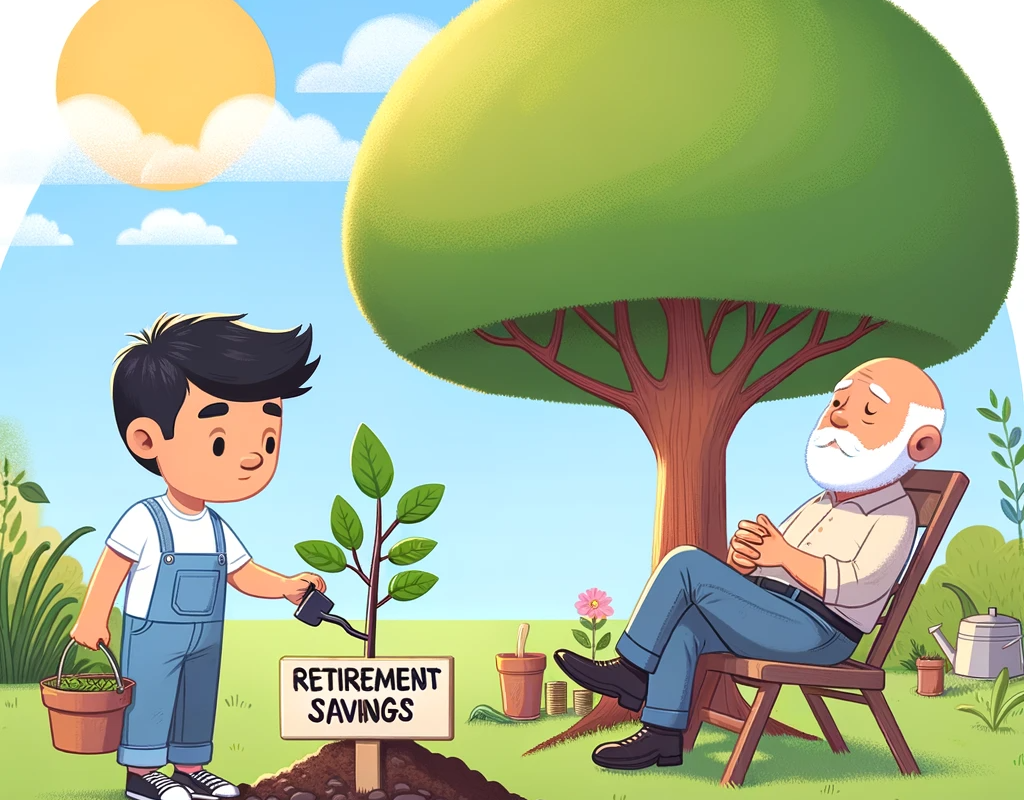Few financial planning objectives are as difficult yet crucial as saving for retirement. But the intricacies of retirement programs and investing techniques may obscure the issue of when to begin saving. The purpose of this post is to provide insight into when it’s best to begin retirement savings as well as strategies for making this process successful.
Why Begin Too Soon?
The strength of Compounding: The strength of compound interest is the strongest argument for beginning savings early. Interest generated on both the original principle and the interest accrued over earlier periods is known as compound interest. For example, if you start saving $200 a month at age 25 and earn an average 7% annual return, you would have around $528,000 by the time you are 65. Starting at 35, on the other hand, would generate about $244,000, demonstrating the significant impact of early saving.
| Age to Start Saving | Monthly Contribution | Total Contribution | Estimated Value at 65 |
|---|---|---|---|
| 25 | $200 | $96,000 | $528,000 |
| 35 | $200 | $72,000 | $244,000 |
Reduced Financial Burden: To achieve the same retirement objectives, you will need to save more per month the later you begin saving. This may be illustrated graphically using a graph that displays the monthly savings needed to attain a given retirement amount at various beginning ages.
What Amount Is Appropriate for Saving?
Retirement Needs Analysis: Performing a retirement needs analysis is a useful method for figuring out how much you should save. The fundamental equation for this is:
Required Savings = Estimated Retirement Expenses – Expected Retirement Income.
For instance, your yearly savings need would be $25,000 if you anticipate requiring $40,000 annually in retirement and receiving a $15,000 pension. The entire amount of funds needed, excluding investment returns, would be $500,000 if you intend to retire at age 65 and live to be 85.
The 4% rule and the 25x rule are two well-liked guidelines for retirement planning. According to the 25x rule, by the time you retire, your savings should be 25 times your yearly retirement costs. According to the “4% rule,” in order to make sure your retirement fund lasts for 30 years, you should take out no more than 4% of it annually.
| Desired Annual Retirement Income | 25x Savings Goal |
|---|---|
| $40,000 | $1,000,000 |
| $60,000 | $1,500,000 |
Investing Techniques for Retirement Funds:
- Asset Allocation: As you get older, your investing approach should change. Younger savers can afford to take on greater risk, which allows them to hold more equities in their portfolio. It makes sense to switch to more reliable assets, like bonds, as retirement draws near. Pie charts are a useful tool for showing how asset allocation may vary with age.
- Risk Tolerance and Time Horizon: As you become older, your risk tolerance usually goes down. Therefore, your investing plan should take this into account. An individual’s potential decline in risk tolerance as they approach retirement age can be shown on a line graph.
Plans for Retirement Savings:
IRAs, 401(k)s, and Other Plans: It is crucial to comprehend different retirement savings options. A portion of an employee’s income can be saved and invested before taxes are deducted using a 401(k) plan, which is frequently provided by their company. Traditional and Roth individual retirement accounts (IRAs) provide distinct tax benefits and are essential retirement savings instruments.
| Plan Type | Contribution Limits | Tax Treatment | Withdrawal Rules |
|---|---|---|---|
| 401(k) | High (up to $19,500 in 2023) | Tax-deferred | Penalties before age 59.5 |
| Traditional IRA | Up to $6,000 in 2023 ($7,000 if over 50) | Tax-deductible contributions; taxes on withdrawals | Penalties before age 59.5; Required Minimum Distributions (RMDs) starting at age 72 |
| Roth IRA | Up to $6,000 in 2023 ($7,000 if over 50) | Contributions with after-tax dollars; tax-free withdrawals | No RMDs; contributions can be withdrawn anytime tax-free |
With their distinct benefits, each of these plans need to be selected in accordance with a person’s retirement objectives and financial circumstances.
Common Errors to Prevent:
- Not Starting Early: The power of compounding has been shown to cause the cost of delay to be significant.
- Underestimating Retirement Needs: A lot of people underestimate their retirement needs, failing to take rising healthcare expenses, inflation, and leisure expenditures into consideration.
- Ignoring the Effect of Inflation: Your savings’ buying power might be severely reduced by inflation. Always make plans with inflation taken into account.
- Ignoring Tax Implications: You may optimize your savings by being aware of how different retirement accounts are taxed.
- Failing to Rebalance: It’s critical to rebalance your portfolio as you become older to reflect your declining risk tolerance.
In summary:
A pleasant retirement is not something that can be attained quickly. Important milestones in this path include identifying your retirement goals, selecting the best savings plan, starting early, and avoiding common traps. The most important lesson is the value of starting early and maintaining a regular investing and saving plan. Recall that 20 years ago was the ideal moment to plant a tree; the present is the second-best period. You will thank yourself later if you begin investing for your retirement now.




